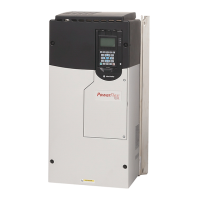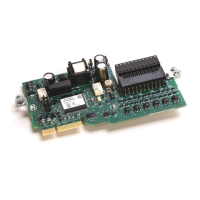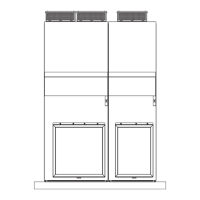440 Rockwell Automation Publication 750-PM001N-EN-P - February 2017
Appendix C Application Notes
PowerFlex 755 Lifting/
Torque Proving
TorqProve™ is a PowerFlex® 755 drive feature that is intended for applications
where proper coordination between motor control and a mechanical brake is
required. Before releasing a mechanical brake, the drive checks motor output
phase continuity and verifies proper motor control (torque proving). The drive
also verifies that the mechanical brake has control of the load before the releasing
drive control (brake proving). After the drive sets the brake, motor movement is
monitored to ensure the brake can hold the load.
TorqProve can be operated with an encoder or encoderless. See “Attention” on
page 356
before the use of TorqProve with no encoder.
TorqProve functionality with an encoder includes:
• Torque Proving (includes flux up and last torque measurement)
• Brake Proving
• Brake Slip (feature slowly lowers load if brake slips/fails)
• Float Capability (ability to hold full torque at zero speed)
• Micro-Positioning
• Fast Stop
• Speed Deviation Fault, Output Phase Loss Fault, Encoder Loss Fault.
Encoderless TorqProve functionality includes:
• Torque Proving (includes flux up and last torque measurement)
• Micro-Positioning
• Fast Stop
• Speed Deviation Fault, Output Phase Loss Fault.
ATTENTION: Loss of control in suspended load applications can cause personal
injury and/or equipment damage. The drive or a mechanical brake must always
control the loads. Parameters 1100…1113 are designed for lifting/torque prove
applications. It is the responsibility of the engineer and/or end user to configure
drive parameters, test any lifting functionality and meet safety requirements in
accordance with all applicable codes and standards.
Brake Slip detection and Float capability (ability to hold load at zero speed) are
not available in encoderless TorqProve.

